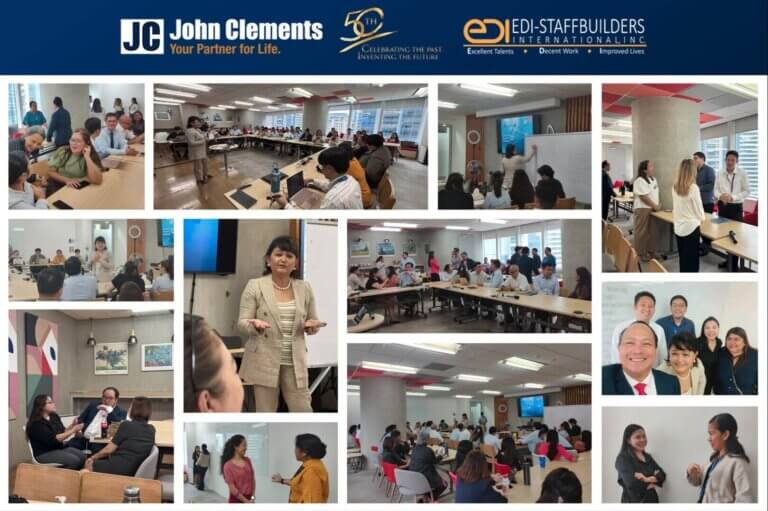One of my good friends once called me a “shameless networker,” and I couldn’t help but laugh because they were absolutely right! Networking has always been one of my strengths, so when the opportunity arose to share my insights with the John Clements team, I jumped at the chance. Last week, we hosted a lively Lunch & Learn session on “Shameless Networking,” and it was an energizing experience for everyone involved.
Networking: More Than Just Business Cards
In today’s professional landscape, networking isn’t just about collecting business cards or racking up LinkedIn connections. It’s about creating meaningful relationships that go beyond the superficial. During our session, I emphasized that the real power of networking lies in the quality of connections you make, not the quantity.
Networking should be seen as an opportunity to share value with others rather than just a transaction. It’s about building trust, understanding the other person’s needs, and figuring out how you can help each other succeed. This mindset shift was eye-opening for many of our participants, who realized that networking can be a win-win scenario when approached correctly.
Shaking Off the Fear
One of the biggest barriers to effective networking is fear—fear of rejection, fear of being perceived as pushy, or simply not knowing what to say. We tackled these fears head-on during the session. The key to overcoming them is to balance warmth and competence. By demonstrating genuine interest in others and showcasing your expertise, you build trust, which is the foundation of any strong professional relationship.
We also practiced our elevator pitches—a crucial tool in any networker’s arsenal. An elevator pitch should be clear, concise, and tailored to your audience. It’s your chance to make a strong first impression and communicate why what you do matters. The participants paired up to craft and deliver their pitches, providing feedback to help each other refine their messages. The result? A room full of confident professionals ready to introduce themselves with poise and impact.
Building a Strategic Network
Effective networking isn’t about casting the widest net; it’s about creating a diverse and dynamic network that supports different aspects of your life and career. We broke down our networks into three key types:
- Operational Contacts: These are the people within your organization who help you get work done. They are crucial for day-to-day tasks and achieving your professional goals.
- Personal Contacts: These are your mentors, friends, and advisors—people who support your personal growth and provide guidance.
- Strategic Contacts: These are individuals outside your immediate field who offer insights into future trends and opportunities. They help you stay ahead of the curve and expand your horizons.
During the session, we mapped out our networks, identifying gaps and areas for growth. Participants left with a clear plan to diversify their connections and strengthen their networks.
Leveraging the Digital Space
In the digital age, networking isn’t limited to face-to-face interactions. LinkedIn and other social media platforms are powerful tools for building and maintaining professional relationships. We discussed how to optimize LinkedIn profiles by using strong headlines, writing compelling summaries, and highlighting key experiences. Engaging with content—by sharing articles, commenting thoughtfully, and participating in group discussions—also helps keep you on the radar of your connections.
We encouraged everyone to update one section of their LinkedIn profile during the session and share the changes with the group. This exercise not only improved their profiles but also sparked conversations about the importance of maintaining an active online presence.
From Small Talks to Big Opportunities
One of the most exciting parts of networking is that it can happen anywhere—in formal settings, casual meetups, or even online. We talked about the value of cultivating ‘weak ties’—those acquaintances or contacts outside your immediate circle who can often lead to unexpected opportunities.
A case study we discussed highlighted how a casual conversation at a social event turned into a significant professional opportunity for someone on our team. This reinforced the idea that networking isn’t just about formal events; sometimes, the best connections are made in the most unexpected places.
The Follow-Up: Sealing the Deal
Networking doesn’t end after the initial interaction. Following up is crucial to solidifying new relationships. We explored the importance of personalized follow-ups—referencing your initial interaction and adding value by sharing relevant content or ideas. We even drafted follow-up emails to hypothetical contacts, focusing on personalization and relevance to ensure the connection doesn’t fade away.
A Call to Action
As we wrapped up the session, the message was clear: Networking is about building and maintaining strong, meaningful relationships. I encouraged everyone to set specific networking goals for the next 30 days—whether it’s reaching out to new contacts or deepening existing relationships.
Networking is your superpower. It’s not just about what you can get; it’s about what you can give. So, go out there, turn those small talks into big opportunities, and let’s continue to build a community of strong, supportive, and shamelessly connected professionals!
John Clements Consultants believes in the power of strategic networking when it comes to achieving professional success. Read more about networking and professional development on our website.





